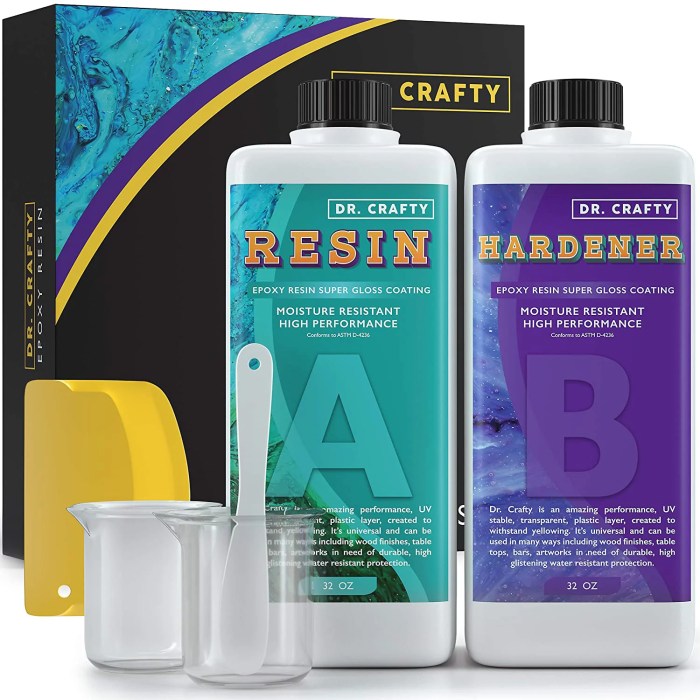Two-part epoxy resins must be heated in order to harden. – Two-part epoxy resins, renowned for their exceptional strength and versatility, require heat to initiate their curing process. This process transforms these liquid components into a hardened state, unlocking their remarkable properties. Join us as we delve into the intricate chemistry and applications of two-part epoxy resins, exploring the crucial role of heat in their transformation.
Epoxy resins consist of two components: a resin and a hardener. The resin contains epoxy groups, while the hardener introduces amine or anhydride groups. When these components are mixed, a chemical reaction occurs, forming a cross-linked polymer network that imparts the resin’s exceptional properties.
Composition and Properties of Two-Part Epoxy Resins

Two-part epoxy resins are a class of thermosetting polymers that are composed of two components: an epoxy resin and a hardener. The epoxy resin contains an epoxy group, which is a three-membered ring consisting of two carbon atoms and one oxygen atom.
The hardener is a reactive compound that contains an amine or acid group.
When the epoxy resin and hardener are mixed, the epoxy group reacts with the amine or acid group to form a cross-linked network structure. This cross-linking process results in the formation of a hard, strong, and durable material.
Unique Properties of Epoxy Resins
- High strength
- Chemical resistance
- Electrical insulation
- Low shrinkage
- Excellent adhesion
Curing Process of Two-Part Epoxy Resins: Two-part Epoxy Resins Must Be Heated In Order To Harden.

The curing process of two-part epoxy resins involves a chemical reaction between the epoxy resin and the hardener. This reaction is initiated by heat, which causes the epoxy group to open and react with the amine or acid group.
The curing time and temperature depend on the type of epoxy resin and hardener used, as well as the ambient conditions. Generally, higher temperatures result in faster curing times.
Factors Affecting Curing Time and Temperature
- Resin composition
- Hardener type
- Ambient temperature
- Curing method
Applications of Two-Part Epoxy Resins

Two-part epoxy resins are used in a wide variety of applications, including:
Adhesives
- Structural adhesives
- Electrical adhesives
- Automotive adhesives
Coatings
- Protective coatings
- Marine coatings
- Industrial coatings
Composites
- Fiber-reinforced composites
- Laminates
- Sandwich panels
Safety Considerations for Two-Part Epoxy Resins
Two-part epoxy resins can be hazardous to handle and use. The epoxy resin and hardener are both corrosive and can cause skin irritation, respiratory problems, and allergic reactions.
Potential Hazards, Two-part epoxy resins must be heated in order to harden.
- Skin irritation
- Respiratory problems
- Allergic reactions
- Eye damage
Safe Handling Guidelines
- Wear protective clothing, including gloves, eye protection, and a respirator.
- Work in a well-ventilated area.
- Avoid contact with skin and eyes.
- Follow the manufacturer’s instructions for mixing and curing.
- Dispose of used epoxy resins and related materials properly.
Essential FAQs
What is the role of heat in the curing process of two-part epoxy resins?
Heat accelerates the chemical reaction between the resin and hardener, promoting the formation of cross-links and the development of the polymer network.
What factors influence the curing time of epoxy resins?
Curing time is affected by the resin composition, hardener type, ambient temperature, and the presence of accelerators or inhibitors.
What are the advantages of using two-part epoxy resins?
Epoxy resins offer high strength, excellent chemical resistance, good electrical insulation, and versatility in various applications.